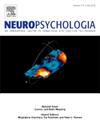先入之见:视觉意象缺失或丧失的历史视角
IF 2
3区 心理学
Q3 BEHAVIORAL SCIENCES
引用次数: 0
摘要
Zeman和他的同事分别在2010年和2015年描述了获得性视觉心理意象丧失或减少以及先天性缺乏视觉意象体验的病例,后者的报告开创了一个新的术语来描述这种症状或体验:“幻觉”。方法对首次使用“幻觉”之前的科学文献中报告的先天性视觉意象缺失或获得性视觉意象丧失的个体和患者进行叙述性回顾。结果接受回顾性诊断或鉴定的潜在缺陷,在历史文献中可以找到与“幻视”一致的例子,包括获得性和先天性,可以追溯到19世纪的第二个十年。结论虽然“幻像症”这个词是2015年才出现的,但其定义特征已经被描述了100多年。这里回顾的数据提供了一个认知基础,以支持回顾性诊断或识别失视。本文章由计算机程序翻译,如有差异,请以英文原文为准。
Aphantasia avant le nom: historical perspectives on the absence or loss of visual imagery
Background
Cases of acquired loss or diminution of visual mental imagery and congenital absence of the experience of visual imagery were described by Zeman and his colleagues in 2010 and 2015 respectively, the latter report inaugurating a new terminology for such symptoms or experiences: “aphantasia”.
Methods
Narrative review of individuals and patients with experiences suggestive of congenital absence or acquired loss of visual imagery reported in the scientific literature prior to the first use of “aphantasia”.
Results
Accepting the potential pitfalls of retrospective diagnosis or identification, examples deemed concordant with “aphantasia”, both acquired and congenital, may be found in the historical literature, dating back to the penultimate decade of the nineteenth century.
Conclusion
Although the word “aphantasia” was new as of 2015, the defining features have been described for more than 100 years. The data reviewed here provide an epistemic basis to support either retrospective diagnosis or identification of aphantasia.
求助全文
通过发布文献求助,成功后即可免费获取论文全文。
去求助
来源期刊

Neuropsychologia
医学-行为科学
CiteScore
5.10
自引率
3.80%
发文量
228
审稿时长
4 months
期刊介绍:
Neuropsychologia is an international interdisciplinary journal devoted to experimental and theoretical contributions that advance understanding of human cognition and behavior from a neuroscience perspective. The journal will consider for publication studies that link brain function with cognitive processes, including attention and awareness, action and motor control, executive functions and cognitive control, memory, language, and emotion and social cognition.
 求助内容:
求助内容: 应助结果提醒方式:
应助结果提醒方式:


